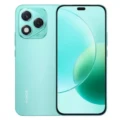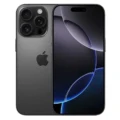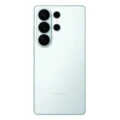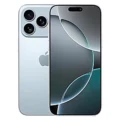Honor 400 Lite vs Redmi Note 15 Pro 5G
The Honor 400 Lite and Xiaomi Redmi Note 15 Pro 5G both offer solid features at similar price points, but they cater to slightly different user preferences. The Honor 400 Lite features a 6.7-inch AMOLED display with a peak brightness of 3500 nits, providing vibrant colors and a sharp 394 ppi pixel density. It’s great for users who enjoy bright and immersive visuals. However, the Xiaomi Redmi Note 15 Pro 5G has a slightly larger 6.83-inch AMOLED display, with a higher resolution of 1220 x 2772 pixels and a higher pixel density of 443 ppi. Additionally, it supports Dolby Vision and HDR10+, which makes it better suited for those who prioritize high-quality video streaming and immersive display features.
In terms of performance, the Xiaomi Redmi Note 15 Pro 5G outshines the Honor 400 Lite. The Redmi Note 15 Pro 5G is powered by the more advanced Mediatek Dimensity 7400 Ultra (4nm), which delivers superior processing power and energy efficiency compared to the Dimensity 7025 Ultra (6nm) in the Honor 400 Lite. The Xiaomi device also has a higher RAM capacity (8GB vs 12GB) and a faster CPU, making it ideal for multitasking and gaming. Despite the Honor 400 Lite offering a generous 12GB of RAM, the overall performance of the Xiaomi device is likely to be smoother and faster for most high-demand tasks.
When it comes to camera setups, the Xiaomi Redmi Note 15 Pro 5G has a more versatile and powerful system. It features a 50 MP primary sensor with OIS (Optical Image Stabilization) and can record 4K videos, making it excellent for both photos and videos.
On the other hand, the Honor 400 Lite has a 108 MP main camera, but it can only shoot 1080p videos, lacking the advanced video recording capabilities of the Redmi Note. Additionally, the selfie camera on the Redmi Note 15 Pro 5G is 20 MP, which is a clear upgrade over the 16 MP camera on the Honor 400 Lite, ensuring better-quality selfies. While both phones offer good performance in photography, the Xiaomi offers more advanced features, especially for video recording.


|
|
| Price | ৳ 32,999.00 ৳ 33,900.00 |
| Our Rating | |
| Brand | Honor Xiaomi |
| Category | Smart Phones Smart Phones |
Price in BD
| Official | 12GB+256GB - 32,999 Tk |
| Unofficial | 12GB+256GB - 26,000 Tk 8GB+256GB - 33,900 TK |
General Info
| Announced | 3 April, 2025 21 August, 2025 |
| Status | Available Available |
| Released | 8 April, 2025 21 August, 2025 |
| Brand | Honor Xiaomi |
| Model | 400 Lite Redmi Note 15 Pro 5G |
| Made By | China China |
Network
| Technology | GSM / HSPA / LTE / 5G GSM / HSPA / LTE / 5G |
| 2G bands | GSM 850 / 900 / 1800 / 1900 GSM 850 / 900 / 1800 / 1900 |
| 3G bands | HSDPA 850 / 900 / 1900 / 2100 HSDPA 800 / 850 / 900 / 1700(AWS) / 1900 / 2100 |
| 4G bands | LTE 1, 3, 5, 8, 19, 28, 34, 38, 39, 40, 41, 42, 48 |
| 5G bands | SA/NSA 1, 3, 5, 8, 28, 38, 40, 41, 48, 77, 78 SA/NSA |
| Speed | HSPA, LTE, 5G HSPA, LTE, 5G |
Body
| Dimensions | 161 x 74.6 x 7.3 mm (6.34 x 2.94 x 0.29 in) 163.6 x 78.1 x 7.8 mm (6.44 x 3.07 x 0.31 in) |
| Weight | 171 g (6.03 oz) 211 g (7.44 oz) |
| SIM SIM (Subscriber Identity Module) is a small card that contains mobile network subscriber's account information. This allows the phone using the card to attach to a mobile network. The SIM card is most commonly associated with GSM and UMTS mobile networks. Moving a SIM card from one phone to another allows a subscriber to switch mobile phones without having to contact their mobile network carrier. SIM cards can also be used by a phone to store limited amounts of data, such as phone numbers and text messages. | Nano-SIM + Nano-SIM + eSIM (max 2 at a time) Nano-SIM + Nano-SIM |
| Build | Glass front (Xiaomi Dragon Crystal Glass) |
| Colors | Marrs Green, Velvet Black, Velvet Grey Midnight Black, Cloud Purple, Sky blue, Cedar White |
| IP Rating | IP65 dust tight and water resistant (low pressure water jets) IP68/IP69 dust tight and water resistant (high pressure water jets; immersible up to 1.5m for 30 min) |
| Models | ABR-NX1, ABR-N31C1 - |
| Others |
Manufacturer-rated water-resistance (up to 2m for 24 hours) IP69K |
Display
| Display Type Display Technology => A number of display technologies and types used in mobile phones => TFT (Thin Film Transistor), IPS (In-Place Switching), OLED (Organic Light Emitting Diode), AMOLED (Active-Matrix Organic Light-Emitting Diode), Super AMOLED (an even advanced version of AMOLED), Resistive Touchscreen (Resistive touchscreens contain two layer of conductive material with a very small gap between them which acts as a resistance), Capacitive Touchsceen (Capacitive touchscreen technology consists of a layer of glass coated with a transparent conductor) | AMOLED AMOLED |
| Size | 6.7 inches, 108.0 cm2 6.83 inches, 111.0 cm2 |
| Screen to Body | ~89.9% ~86.8% |
| Features | 3840Hz PWM 68B colors, HDR10+, Dolby Vision, 3840Hz PWM |
| Brightness | 3500 nits (peak) 3200 nits (peak) |
| Refresh Rate | 120Hz 120Hz |
| Resolution | 1080 x 2412 pixels 1220 x 2772 pixels |
| Aspect Ratio | 20:9 |
| Pixel Density Pixel Density (PPI) is refers to the concentration of pixels on a particular display, measured in pixels per inch (ppi). Pixel density is calculated by dividing the diagonal pixel resolution of a display by its diagonal size, higher pixel density better display quality. | ~394 ~443 ppi |
| Protection | Xiaomi Dragon Crystal Glass |
| Touch Screen | Capacitive Touchscreen, Multi-touch Capacitive Touchscreen, Multi-touch |
Performance
| Chipset Chipset is a group of integrated circuits designed to perform one or a more dedicated functions, often with real time computing constraints, Popular smartphones are equipped with more advanced embedded chipsets that can do many different tasks depending on their programming. | Mediatek Dimensity 7025 Ultra (6 nm) Mediatek Dimensity 7400 Ultra (4 nm) |
| CPU CPU (Central Processing Unit) mostly known as processors, CPU processes instructions in order to carry out certain functions that make your device operate properly. Processors are often described as the brain of computers, smartphones and tablets, Smartphones and tablets rely on processors to carry out their every task, Processors are an incredibly important factor in selecting any type of computing device, including your smartphone. | Octa-core (2x2.5 GHz Cortex-A78 & 6x2.0 GHz Cortex-A55) Octa-core (4x2.6 GHz Cortex-A78 & 4x2.0 GHz Cortex-A55) |
| GPU GPU (Graphics Processing Unit) is a single-chip processor designed to rapidly manipulate and alter memory to accelerate the creation of images in a frame buffer intended for output to a display, This includes things such as lighting effects, object transformations, and 3D motion. | IMG BXM-8-256 Mali-G615 MC2 |
| OS | Android 15, up to 6 major Android upgrades Android 15 |
| UI | MagicOS 9 HyperOS 2 |
Memory
| RAM RAM (Random Access Memory) is a type of computer memory that can be accessed randomly, any byte of memory can be accessed without touching the preceding bytes that allows information to be stored and accessed quickly from random locations. RAM is the most common type of memory found in computer systems, smartphones, tablets and other electronic devices. | 12 GB 8 GB |
| ROM | 256 GB 256 GB |
| Card Slot Memory Card Slot is a special slot for inserting a memory card. Memory cards allow you to expand the phone's built-in memory, A memory card (sometimes called a flash memory card or a storage card) is a small storage medium used to store data such as text, pictures, audio, and video, for use on small, portable or remote computing devices such as mobile phones, mp3 players, digital cameras. | No No |
| UFS | 2.2 |
Main Camera
| Dual |
108 MP, f/1.8, (wide), 1/1.67", PDAF 5 MP, f/2.2, (ultrawide) 50 MP, f/1.5, (wide), 1/1.95", 1.6µm, multi-directional PDAF, OIS 8 MP, 112˚ (ultrawide) |
| Features | HDR, panorama HDR, panorama |
| Flash Flash Light => There is commonly two types of flash lights are used in camera mobile phones, LED Flash (LED flash offers lower power consumption with drive circuitry that takes up very little room, LEDs can be strobed faster than any other light source), Xenon Flash (xenon flash produces an extremely intense full-spectrum white light for a very short duration) | LED flash LED flash |
| Video Recording | 1080p@30fps 4K@24/30fps, 1080p@30/60/120fps, gyro-EIS, OIS |
| Autofocus | |
| Settings | Exposure compensation, ISO control Exposure compensation, ISO control |
| Zoom | Digital Zoom Digital Zoom |
| Image Resolution | 16000 x 12500 Pixels |
Selfie Camera
| Single | 16 MP, f/2.5, (wide) 20 MP, (wide) |
| Features | HDR, panorama |
| Video Recording | 1080p@30fps 1080p@30/60fps |
Sound
| Loudspeaker | |
| 3.5mm jack | |
| Others |
with stereo speakers (with Dolby Atmos) 24-bit/192kHz Hi-Res & Hi-Res wireless audio |
Connectivity
| WLAN Wi-Fi is a popular wireless networking technology using radio waves to provide high-speed network connections that allows devices to communicate without cords or cables, Wi-Fi is increasingly becoming the preferred mode of internet connectivity all over the world. | Wi-Fi 802.11 a/b/g/n/ac, dual-band, Wi-Fi Direct Wi-Fi 802.11 a/b/g/n/ac/6, dual-band, Wi-Fi Direct |
| Bluetooth Bluetooth is a wireless communications technology for exchanging data between mobile phones, headsets, computers and other network devices over short distances without wires, Bluetooth technology was primarily designed to support simple wireless networking of personal consumer devices. | 5.3, A2DP, LE 5.4, A2DP, LE, LDAC, LHDC |
| Positioning | GPS, GLONASS, GALILEO, BDS GPS, GALILEO, GLONASS, QZSS, BDS |
| NFC NFC (Near field communication) is a set of standards for smartphones and similar devices to establish peer-to-peer radio communications with each other by touching them together or bringing them into proximity, usually no more than a few inches. | |
| Infrared Infrared connectivity is an old wireless technology used to connect two electronic devices. It uses a beam of infrared light to transmit information and so requires direct line of sight and operates only at close range. | |
| Radio | |
| USB | Type-C 2.0, OTG Type-C 2.0, OTG |
Sensors
| Sensors Sensors are electronic components that detects and responds to some type of input from the physical environment. The specific input could be light, heat, motion, moisture, pressure and location, The output is generally a signal that is converted to use in computing systems, a location sensor, such as a GPS receiver is able to detect current location of your electronic device. | accelerometer, compass, proximity (ultrasonic) accelerometer, gyro, compass, proximity |
| Fingerprint | Under display, ultrasonic Under display, optical |
| Face Unlock | Yes Yes |
| Others | Circle to Search |
Battery
| Battery Type Battery Type => Cell phones run on various kinds of batteries depending on the manufacturer, phone size or shape and features. There are basically four types of cell phone batteries => Lithium Polymer, Lithium Ion, Nickel Metal Hydride and Nickel Cadmium. | Li-Pol (Lithium Polymer) Li-Pol (Lithium Polymer) |
| Capacity Battery Capacity is a measure (typically in Amp-hr) of the charge stored by the battery, and is determined by the mass of active material contained in the battery. The battery capacity represents the maximum amount of energy that can be extracted from the battery under certain conditions. | 5230 mAh 7000 mAh |
| Charging |
35W wired
45W wired 22.5W reverse wired |
Tests


|
Disclaimer Note
We always try our best to keep our website content and information updated and correct, the material and information contained on our website is for general information purposes only, You should not rely upon the material and information as a basis for making any business, legal or any other decisions.










